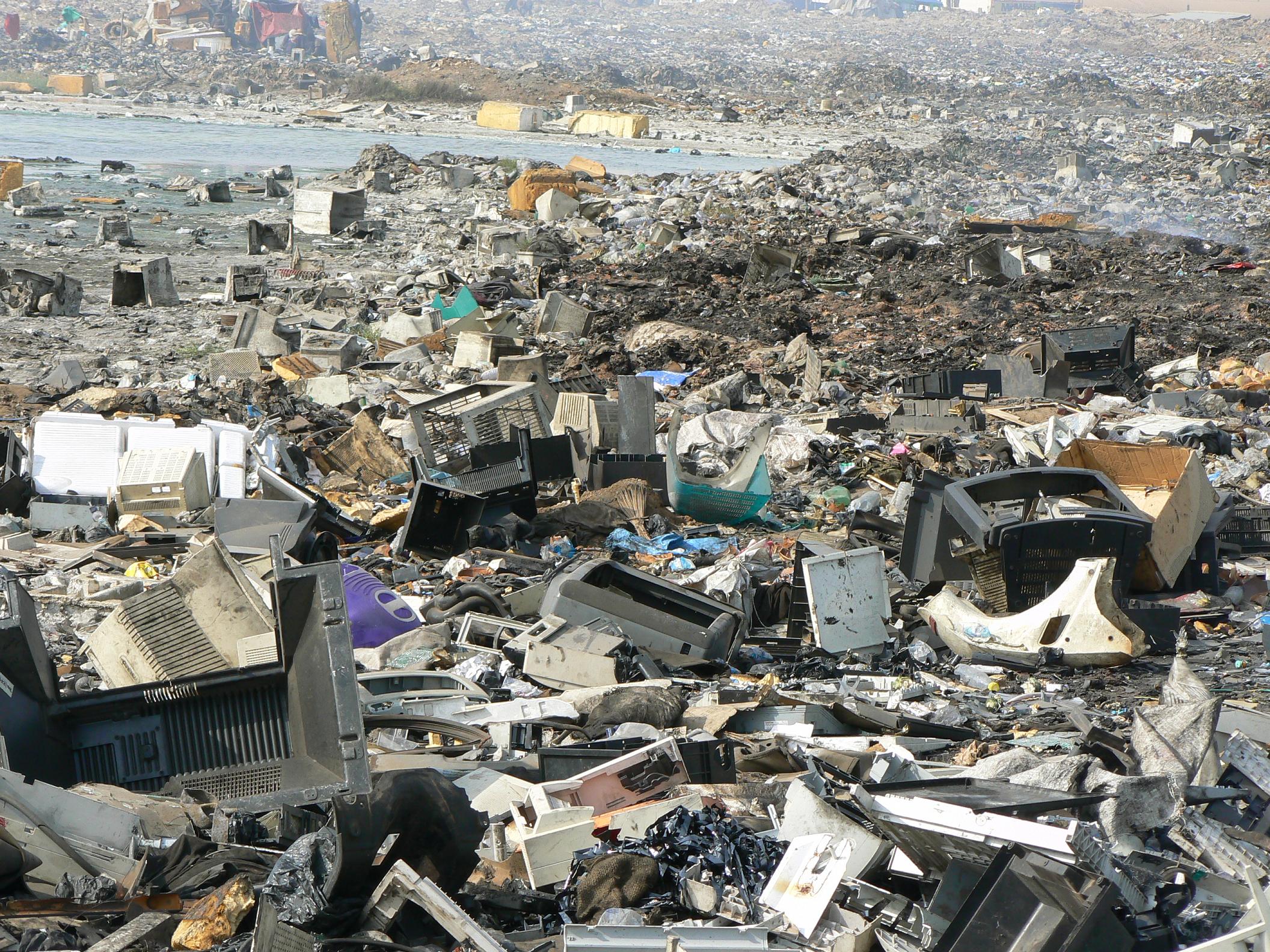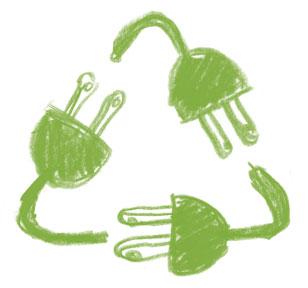There are a lot of humans on our planet – over 7 billion humans, in fact. And with a lot of people, comes a lot of waste. The average “life expectancy” of an electronic device (computers, phones, tablets, TVs) is only about three years. Of course we throw away our devices when they break, but most of this e-waste is due to upgrades and replacements. Do we need to upgrade our phone every couple of years? Probably not. Do we upgrade it anyway? Of course.
Let’s look at some figures to get some perspective. In 2012, we generated 3,240,000 tons of e-waste. In the US, we spent over $206 billion on electronics with the average household spending $1312 per year. These figures have been slowly rising over the past few years, and there’s a few reasons we should be concerned.
 With that much e-waste, it’s easy to imagine how much space that must take up. The number of landfills in the US has decreased over time, but average sizes of our landfills has been going up (this would be true excluding e-waste, so e-waste only helps exacerbate the issue). Thanks to the heavy metals and organic pollutants in e-waste, this isn’t so great for our health. While the US tops the charts for e-waste generation, this is a global issue that even the United Nations has been looking into.
With that much e-waste, it’s easy to imagine how much space that must take up. The number of landfills in the US has decreased over time, but average sizes of our landfills has been going up (this would be true excluding e-waste, so e-waste only helps exacerbate the issue). Thanks to the heavy metals and organic pollutants in e-waste, this isn’t so great for our health. While the US tops the charts for e-waste generation, this is a global issue that even the United Nations has been looking into.
Now, it’s not all bad news when it comes to e-waste. We do recycle, and in 2012 we managed to recycle a little over 29% of our e-waste. If we do the math, that’s 939,600 tons – nothing to be embarrassed about. Trends indicate this number will only rise in the future. But will it rise fast enough?
The EPA has been working towards cleaning up e-waste by working with countries around the globe and tracking the life cycle of electronics. They’ve also been working with StEP, who works to solve the e-waste problem by looking at more than just recycling.
StEP focuses on the entire life of an electronic device – starting with how it’s designed. This makes sense – if we design our products to be more environmentally friendly, easier to recycle, and easier to fix then our e-waste should naturally decrease. Another focus of StEP is reuse. Designing and utilizing technology in a way that enables it to be refurbished or reused will completely remove that technology from our waste disposal and recycling processes.
As a consumer, what can you do to help solve this problem? Well, there are actually a lot of places that will take your used technology. Instead of throwing out your old computer, try looking into either donating or recycling it. Keep sure wherever you recycle is certified by the EPA!
 A quick search should provide you with the nearest locations for recycling centers and potential places to donate your tech. Often public schools and charity programs will take old computers, and sometimes even old mobile phones. Check with the program you want to donate to first, however, as not all devices will fit their needs. And don’t forget to remove your data!
A quick search should provide you with the nearest locations for recycling centers and potential places to donate your tech. Often public schools and charity programs will take old computers, and sometimes even old mobile phones. Check with the program you want to donate to first, however, as not all devices will fit their needs. And don’t forget to remove your data!
If you can’t find any resources around, try reaching out to manufacturers or refurbishers. You can find registered refurbishers through Microsoft! Companies like Apple and Best Buy will also take certain e-waste and dispose of it properly, so it might be worth stopping by on your next shopping trip.
